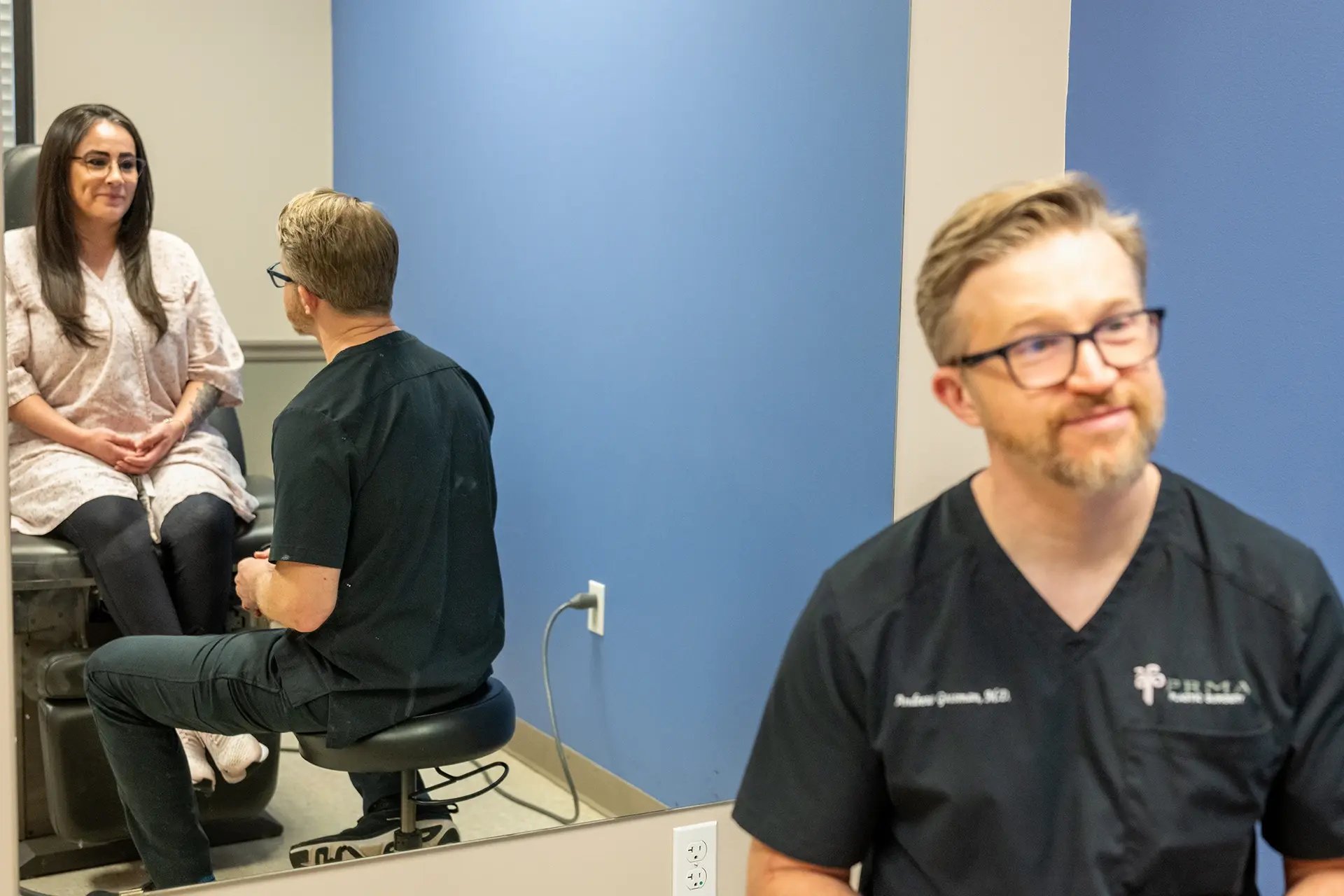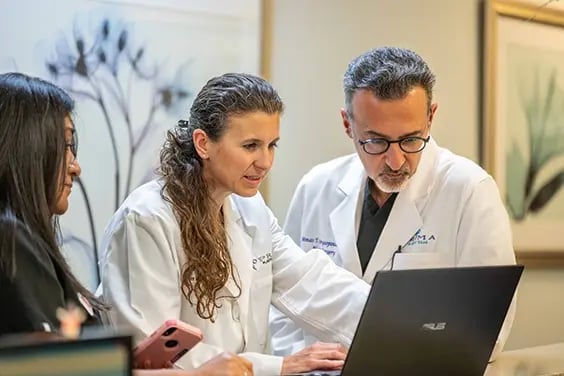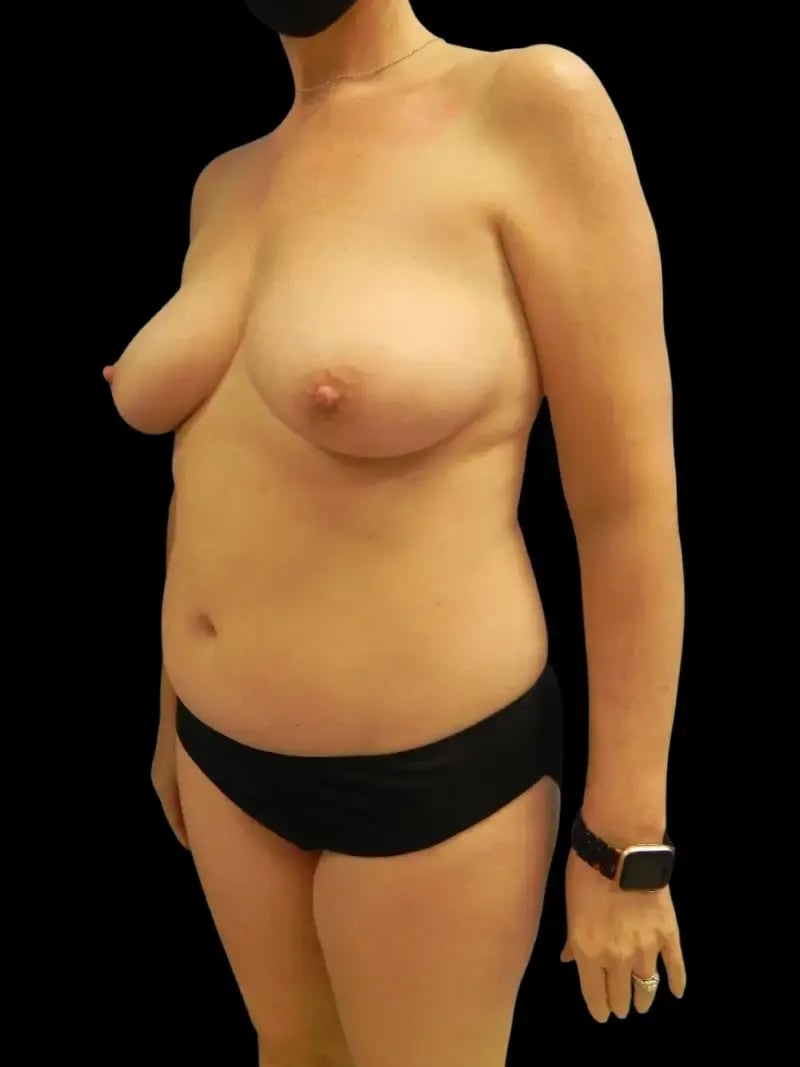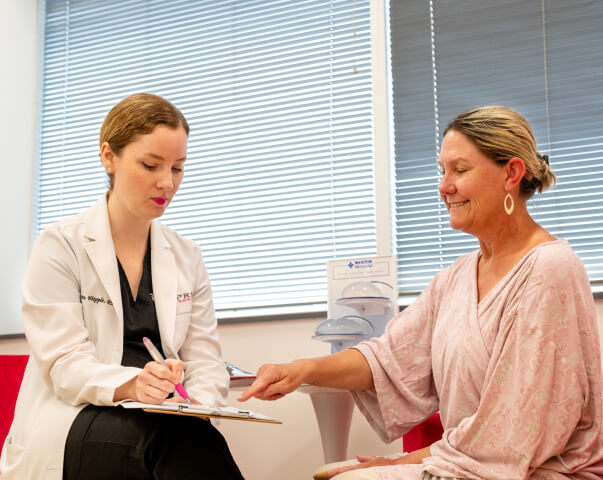
Thigh Flaps (PAP, TUG, VUG, LTP)
What Are Thigh Flaps?
For women seeking natural breast reconstruction who may not be candidates for abdominal tissue options like the DIEP flap, thigh flap procedures offer an empowering alternative. These surgeries use tissue from the upper inner thigh or buttock area to create a soft, natural breast shape—without the need for implants.
At PRMA, our expert microsurgeons offer several types of thigh flaps, including the PAP flap (Profunda Artery Perforator), TUG flap (Transverse Upper Gracilis), LTP flap (Lateral Thigh Perforator), and VUG flap (Vertical Upper Gracilis).
Unlike abdominal flaps such as the DIEP, thigh flaps are ideal for women who may not have enough abdominal tissue or prefer a different donor site. They can also be a solution for those who have had prior abdominal surgeries.
Key Information
Dual-surgeon precision: Performed with PRMA’s dual-surgeon microsurgical expertise for enhanced safety and results.
Understanding Your Options
PAP Thigh Flap
TUG Thigh Flap
VUG Thigh Flap
LTP Thigh Flap
What to Expect During Surgery
During thigh flap reconstruction—whether PAP, TUG, VUG, or LTP—tissue from your inner or outer thigh is carefully transplanted to recreate a soft, natural breast. Using advanced microsurgical techniques, PRMA’s dual-surgeon team connects tiny blood vessels under a microscope to ensure healthy blood flow to the new breast.
Depending on the flap type, some procedures (like TUG and VUG) may use a small portion of muscle, while others (like PAP and LTP) spare muscle entirely. Surgeries are performed under general anesthesia, with most patients spending 2–3 days in the hospital afterward for recovery and monitoring.
Every step of the way, PRMA is committed to providing expert surgical care, compassionate support, and the safest path to reclaiming your confidence and well-being.

Before & After




Recovery Timeline
-
Week 1:You'll spend the first few days in the hospital for close monitoring. During this time, expect swelling, bruising, and soreness at both the chest and thigh donor sites. Movement will be limited, but gentle walking is encouraged to promote circulation.
-
Week 2:During the second week, discomfort begins to ease, although tenderness and fatigue are still common. Light walking around the house is encouraged, but you’ll need to avoid bending, squatting, and lifting anything heavy.
-
Week 3-4:Swelling and bruising continue to fade into weeks three and four, and your range of motion improves. Many patients start to feel stronger and more independent, though strenuous activities are still off-limits.
-
Week 5-6:Energy levels are noticeably better, and many patients return to desk work and light daily routines. Gentle stretching may be introduced if approved by your surgeon, but heavy lifting and vigorous exercise should still be avoided.
Am I a Candidate for Thigh Flap Surgery?
While thigh flap reconstruction offers an excellent, natural option for many women, it’s not the best fit for everyone. Factors like body shape, tissue availability, previous surgeries, and personal goals all play an important role in determining the right approach.
Ideal candidates for thigh flap include:
- Individuals without sufficient abdominal tissue for a DIEP or other abdominal-based flap.
- Women who have had previous abdominal surgeries (like a tummy tuck) that limit abdominal donor tissue options.
- Patients seeking an implant-free, natural reconstruction option.
- Women with adequate soft tissue available on the inner or outer thighs.
- Patients willing to accept scars on the thigh in exchange for natural breast results.
- Women who are in overall good health and nonsmokers (or willing to stop smoking before surgery) to promote safe healing.
- Patients looking for a long-lasting solution with minimal long-term maintenance compared to implants.
Find Your Surgeon
Will Insurance Cover Thigh Flap Surgery?
Most insurance plans are required by law to cover breast reconstruction after mastectomy, including natural tissue options like thigh flap procedures. At PRMA, we work closely with patients and their insurance providers to help navigate the approval process and make reconstruction as accessible and stress-free as possible.
For more information, visit our Insurance FAQs in the patient resource center.

Preparing for Surgery
Learn more about:




